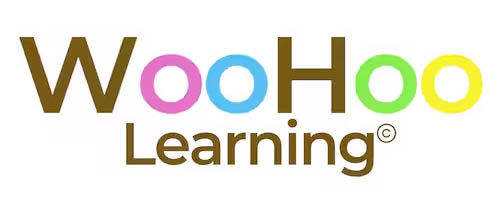The penguin is one of the most fascinating animals on planet Earth and sparks a lot of curiosity, not only because they live so far away but also because they are a bird that has transformed its wings into flippers and doesn’t fly, only walks and swims. Young children love learning about penguins, and if you work on a project or unit about this beautiful animal with them, you’ll notice their motivation is very high and consistent. Take advantage of that motivation to teach them important concepts like the life cycle of an animal, the physical anatomy of the animal, the different species, their habitat, and much more.
If you, like me, are passionate about the Montessori methodology, its approach to teaching, and its learning environment, you’ll love working with my penguin unit. The way I use my units with my students is very experiential—I bring real objects into the classroom so they can touch, observe, and explore them. This approach, which focuses on the child, encourages learning through experimentation and discovery. Next, I’ll explain how to use this unit with your students.
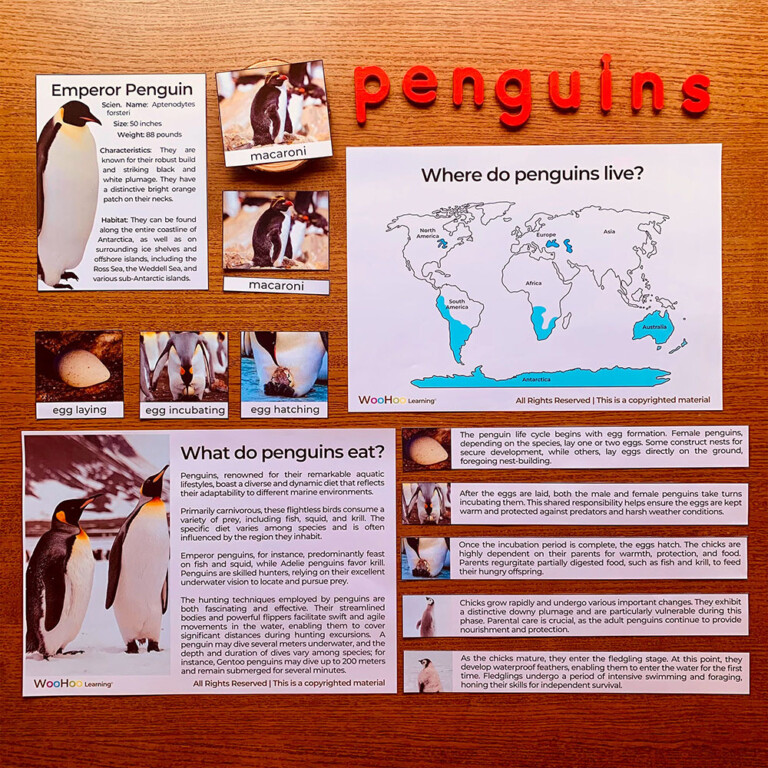
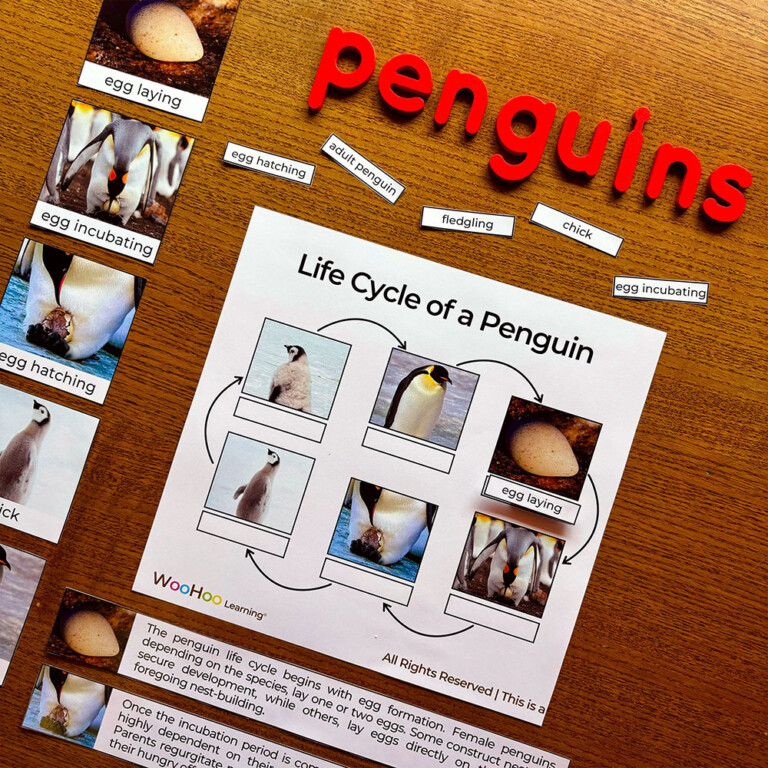
First, I recommend starting with the penguin anatomy section. If possible, bring some penguins figurines into your class so children can examine them up close—touch them, explore them, and engage with them. Before sharing any information, ask them some guiding questions: “What do you know about penguins?”, “Do you think penguins live on our continent?”, “Do you know if they are a bird or a mammal?”.
After the hands-on exploration of the penguin, you can move on to learning about the penguin parts: eye, ear, bill, neck, belly, flipper, tail, webbed feet, and claws. The labeled poster will be a great tool to introduce these parts. Then, you can use the 3-part cards to help students work on vocabulary and specific definitions.
"At some given moment it happens that the child becomes deeply interested in a piece of work; we see it in the expression on his face, his intense concentration, the devotion to the exercise"
The Discovery of the Child, Maria Montessori
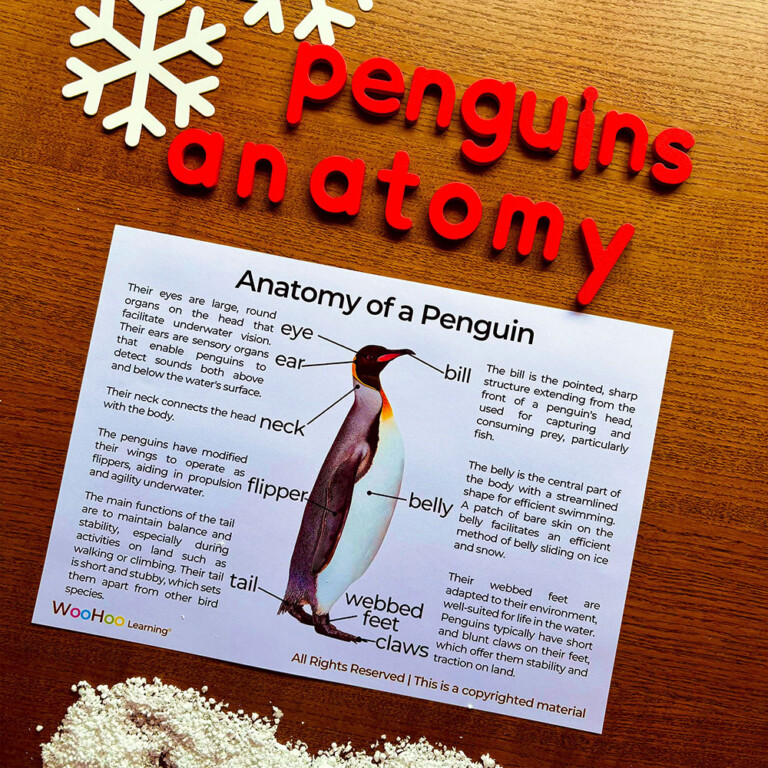
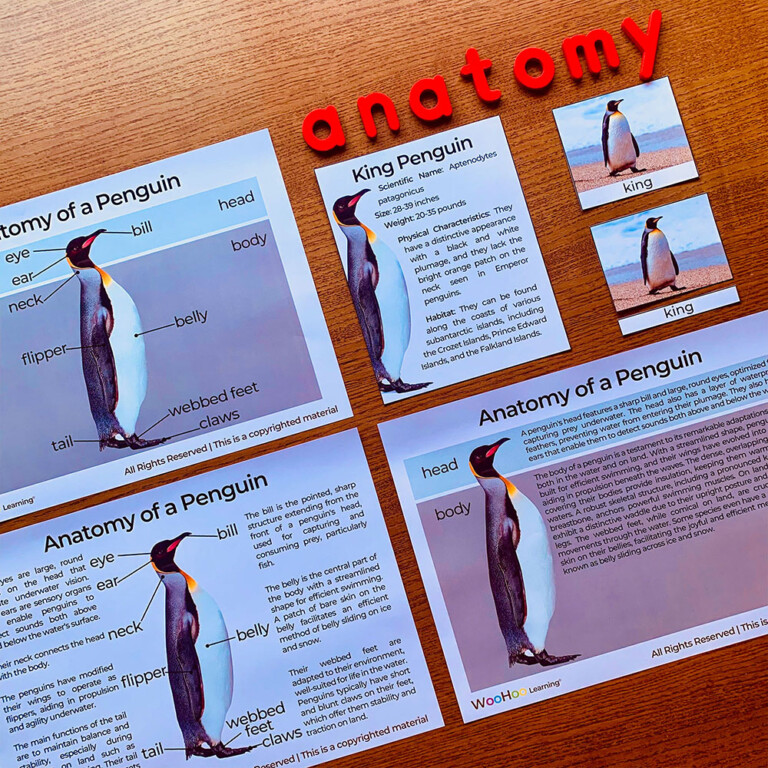
Once the children are familiar with the penguin and its anatomy, it’s time to delve into the life cycle of the penguin. You can start this section by asking questions like, “Is the penguin born on land or in the water?”, “Is it a viviparous or oviparous animal?”, “Would you say that its appearance is the same from chick to adult?”. These questions will help students prepare to learn about the six stages of the penguin life cycle: egg laying, egg incubating, egg hatching, chick, fledgling, and adult. To support this learning, you can use the definition cards, the 3-part cards, and the 4-part cards with definitions.
Here are some of the elements I’ve used to accompany this unit and their purchase links, in case you’re interested:
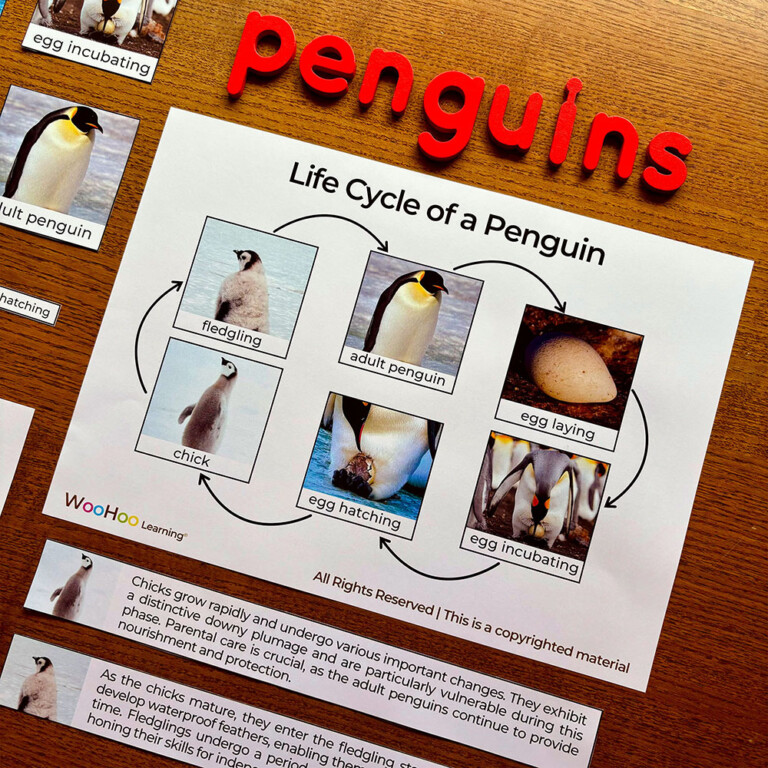
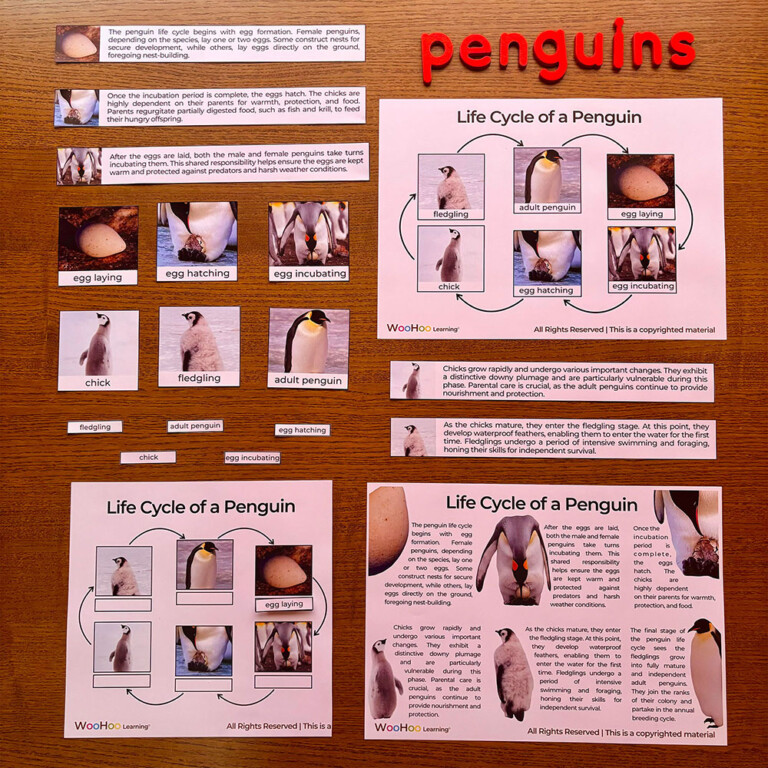
After understanding the anatomy and life cycle of the penguin, the children will be ready to learn about the different penguin species. As always, I suggest starting with some thought-provoking questions: “How many penguin species do you think exist?”, “Do you think all species live in the same place?”, “Can you name any species?”. You might also bring different types of figurines, allowing the students to touch, experiment with, and hypothesize about them.
Once our students have learned about the anatomy of the penguin, the life cycle of the penguin, and the different species, we can move on to activities included in the unit or explore more about this animal. For instance, you could delve into the penguin diet, their main predators, courtship and mating rituals, and much more.
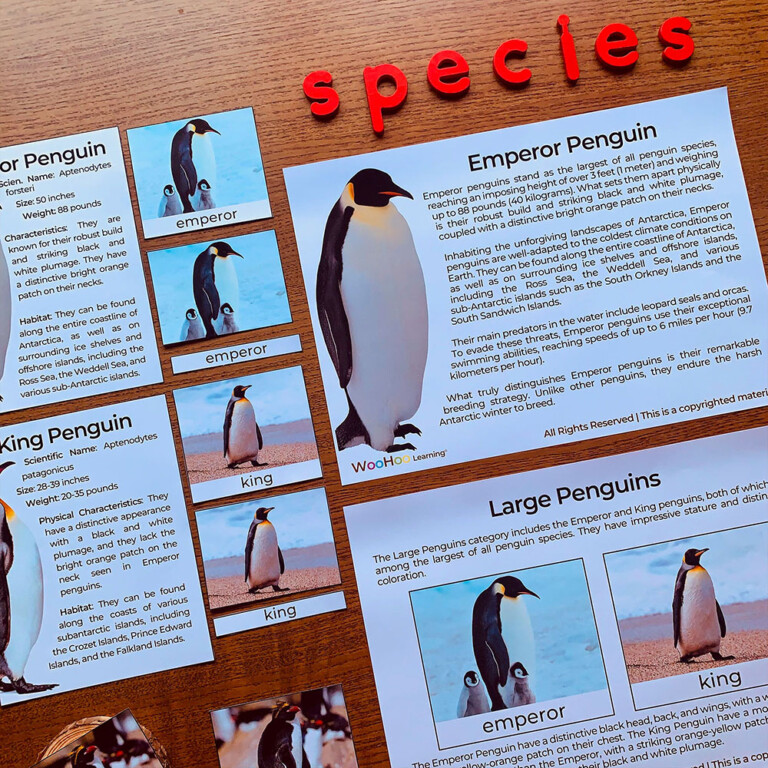
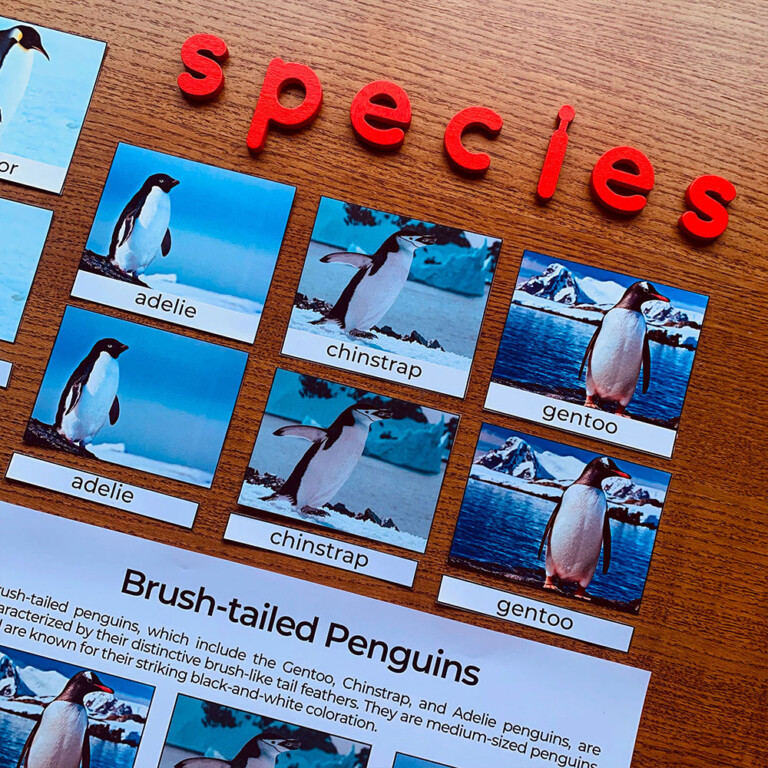
If you’re interested in purchasing my penguin unit study, you can find direct access to it below. If you only want a part of the unit, don’t worry, that’s also possible. In total, there are 4 different units available: the complete penguin unit, the penguin life cycle unit, the penguin anatomy unit, and the penguin species unit.
The complete penguin unit consists of 74 pages and contains all kinds of information about penguins, including migration information, penguin species, interesting facts, life cycle, anatomy, and much more. The penguin anatomy unit has 10 pages and includes posters, 3-part cards, vocabulary cards, and activities. The penguin life cycle unit has 10 pages and includes posters, 3-part cards, vocabulary cards, and activities. Finally, the penguin species unit has 44 pages and includes 3-part cards, display posters, informative cards, fact cards, and much more.
*If you feel more comfortable making your purchase on well-known platforms, you can also find my products on other e-commerce sites. Here are the links to my Etsy store and my Teachers Pay Teachers store.
